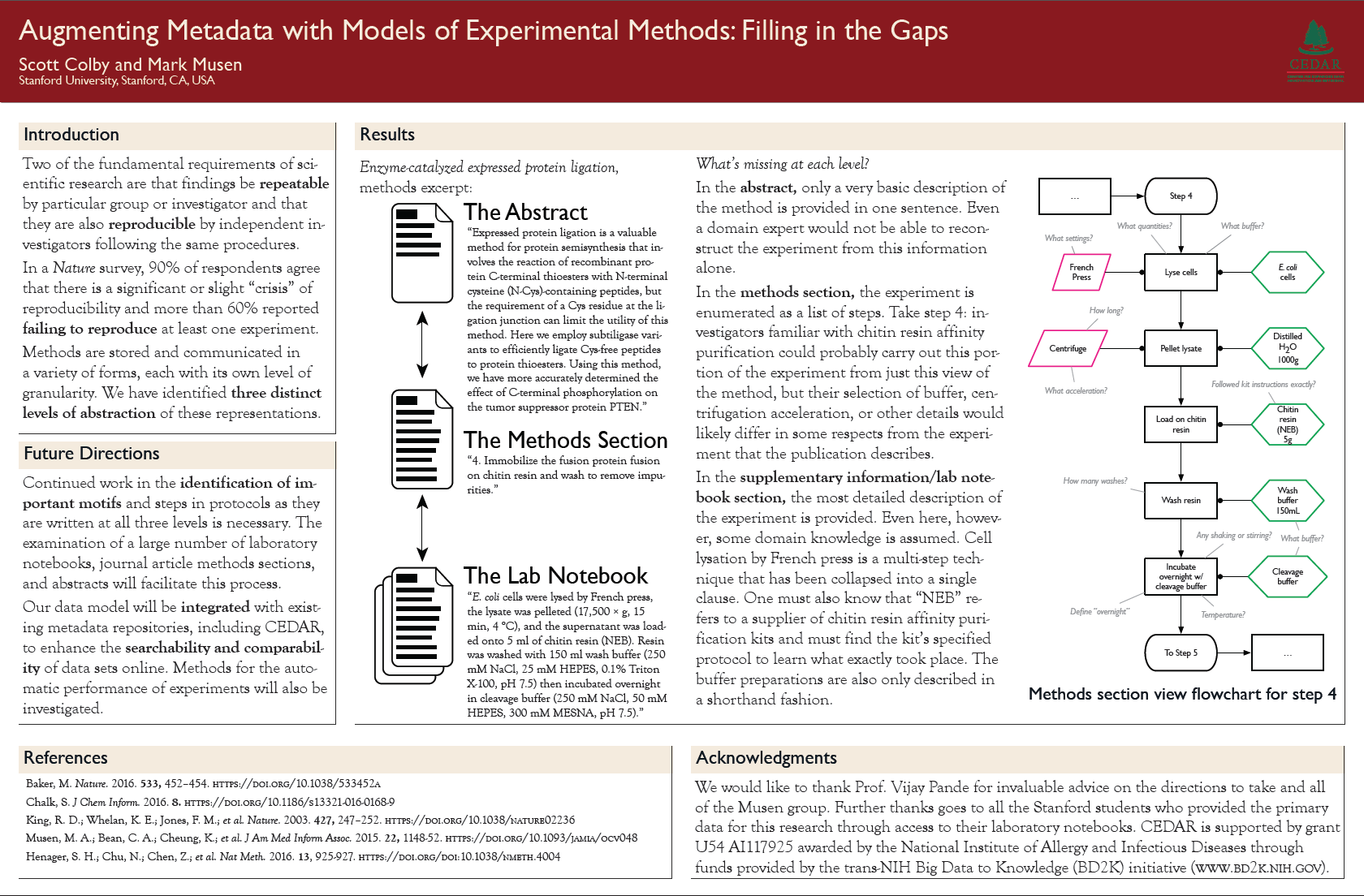|
Presenting Author Information |
|
|
Name |
Scott Colby |
|
Institution |
Stanford Center for Biomedical Informatics Research, Department of Medicine, Stanford University |
|
BD2K Grant Number |
U54 AI117925 |
|
PI |
Mark Musen |
|
|
|
|
Phone Number |
|
|
Additional Author Information |
|
|
Names and affiliations of additional authors (one per line) Mark Musen, Stanford Center for Biomedical Informatics Research, Department of Medicine, Stanford University |
|
|
Is there an additional contact person? |
Yes |
|
Name of additional contact |
Mark Musen |
|
Email address of additional contact |
|
|
Additional information |
|
|
Please choose the topic that best fits your abstract (posters will be grouped according to your selection). Detailed session descriptions can be found in the Abstract Guidelines. |
Software, Analysis, & Methods Development |
|
Please consider my abstract for a (See Presentation Guidelines) |
Poster only |
|
Abstract Information |
|
|
Poster presentations may be submitted electronically in order to reach a wider audience and be available after the All hands meeting. Do you plan to submit your poster as a digital submission in addition to bringing a physical copy? |
Yes |
|
Abstract Title Augmenting Metadata with Models of Experimental Methods |
|
|
Abstract Description A rigorous and machine-readable model for representing experimental methods is a necessity for improving the replicability and reproducibility of scientific experiments. Knowledge about experimental methods can be incorporated as metadata in online data sets and used to guide the work of future investigators. The technology being developed by the Center for Expanded Data Annotation and Retrieval (CEDAR), which is designed to ease the annotation of online data sets, will use such representations of experimental methods to improve communication among researchers and to automate experimental workflows that replicate previous investigations. We have identified three distinct levels of abstraction used to represent experimental methods: (1) the level of the "abstract" (how the method would be presented in a paper's abstract), (2) the level of the "methods section," and (3) the level of the "notebook" (or that of supplementary information). Even at the level of "supplementary information," important details needed to carry out the experiment are often left out because they are assumed to be obvious. This problem is only exacerbated at the less-specific levels. With a rigorous model of this experiment, all steps, no matter how "well-known," will be expressed. Having all details available, if needed, will allow for better understanding of the method and for better understanding of the resultant data. Our work will result in the identification of motifs and steps in protocols as they are written at all three levels. The representation scientific methods in this manner will provide a detailed, multi-scale model of scientific procedures that can stand in for the methods section of a publication when searching for or comparing data sets online. |
|


